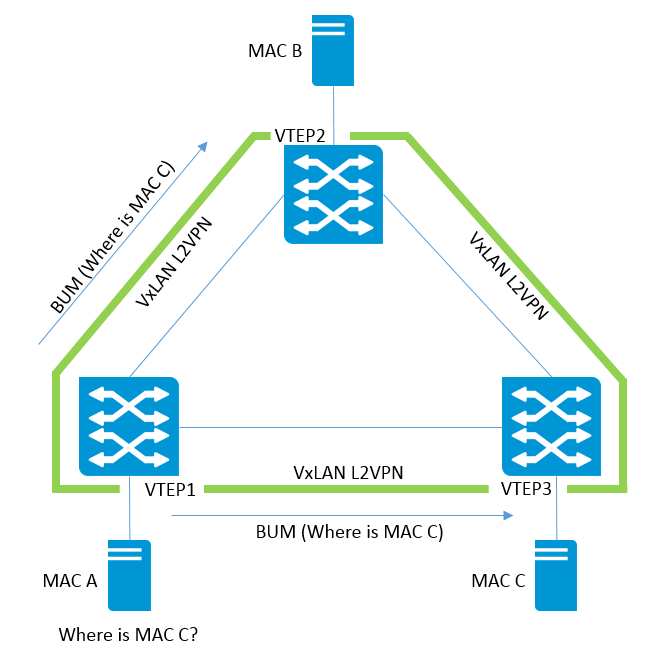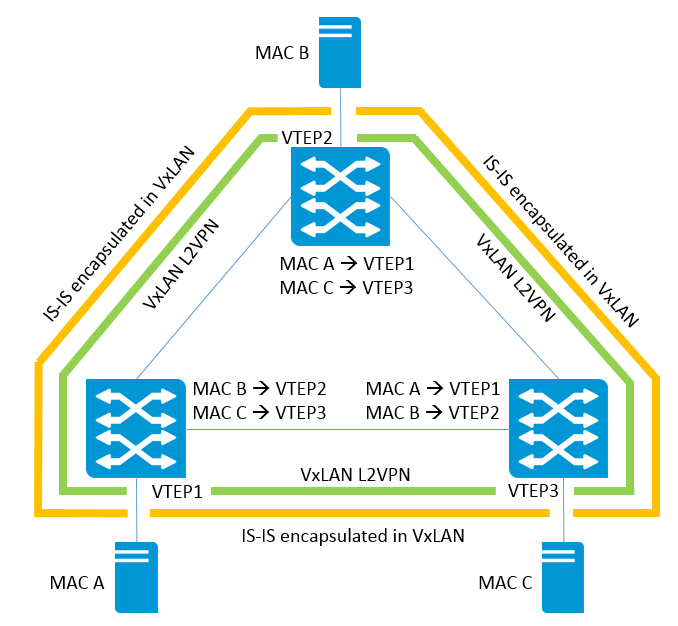Always wanted to become a pilot? Today I will be covering the VxLAN control plane functionality. Before you continue to read this blog, please fasten your seat belts, be aware of your nearest exit and make sure you understand the basics of VxLAN and VTEP. You can find a good introduction of VxLAN here.
By default, VxLAN does not provide any control plane functionality. This means that all control plane functionality is not performed by the VTEP's but only the devices that are connected to the VTEP's. In other words, a VxLAN tunnel is just a tunnel, it places all the traffic in the tunnel. So, for MAC address learning, by default, if a source host needs to find a destination host, the source VTEP forwards the broadcast (BUM: Broadcast Unicast Multicast) to all the destination VTEP's.

Now, it would be great if the local VTEP knew about the location of a destination MAC address and thus could forward the data directly to the right destination instead of flooding each frame bound for unknown destination MAC addresses. This can be achieved by introducing a control plane. The control plane ensures that the VTEP's exchange the local MAC address information. Each VTEP knows about its local MAC addresses and by using a control plane protocol this information can be exchanged with the other VTEP's.

This means that if a local host wants to communicate with a destination host the local VTEP will know its destination VTEP and will forward the data directly.
There are many different ways of exchanging this information. It can be done using the underlay multicast functionality. The challenge with this is that the network will require end to end multicast either IGMP or in case of a Layer 3 Spine leaf architecture a multicast routing protocol like PIM. This will require addition overhead in terms of configuration and maintenance.
A better way is to use a routing protocol to exchange the required information. The HPE switches and routers that support VxLAN can use the IS-IS protocol to achieve this. With this method a dedicated VNI (this is a tunnel between the VTEP's) is established and the IS-IS protocol is used to exchange the MAC address information.

And an even better way is to utilize a new MP-BGP address family, known as EVPN. This is the preferred method for most vendors and it is based on an industry standard RFC 7342.
Be on the lookout the next blog where I will be covering EVPN and how this works.
If you would like to find out more on how to configure VXLAN on HPE kit, check out the ABC Networking channel on YouTube.




